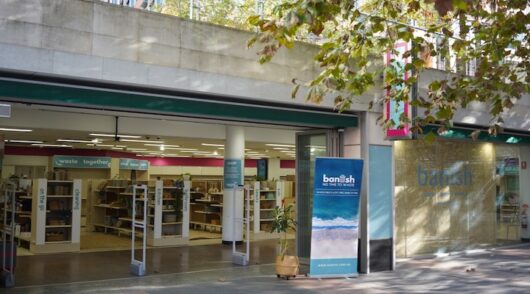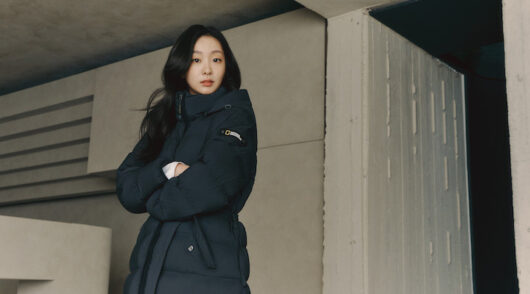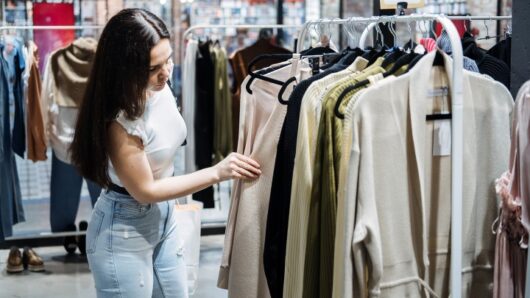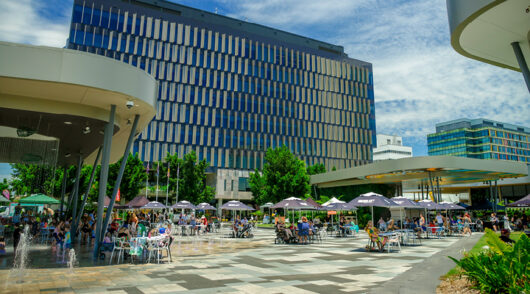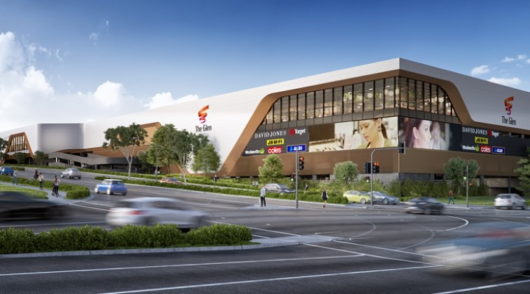You may have the most revolutionary new product, or the hottest fashion at the best prices, but without effective visual merchandising, it can all amount to nought.
According to Keshia Abeysekera, creative director of Melbourne retailer, Cylk, the quality of a retailer’s visual merchandising (VM) can make or break a business.
“For us (Cylk) with VM it’s important the product is really accessible and is displayed in a way that is welcoming and encourages customers to touch it,” says Abeysekera.
It may sound quaint, but according to experts in VM, success is all about story telling.
“We need to merch the store so it tells a story and the girls (sales assistants) then build on that with product knowledge and information they convey to the customers,” she says.
Carla Cowan, national VM and project manager at Fossil, agrees with the philosophy of weaving stories among the product.
“As far as our displays go, the biggest trend is story telling, so our watches are displayed in a way where we distort key trends,” explains Cowan.
“What we’re trying to do is tell a story, so we group watches together, we take a particular model that we think is on trend and we blow it out.
“Good VM is where you think about it and plan what you want the consumer to see, what you want them to buy, not just throwing a whole lot of products on a shelf,” Cowan says.

Cylk store interior

Fossil
Brian Kelly, project and business development manager, retail design at Visual Inspirations, has seen several themes emerging in retail when it comes to VM, including the use of geometric patterns and neon and pastel colours.
Kelly, who started out his career as a window dresser, has worked across many aspects of retail, before joining visual merchandising provider, Visual Inspirations.
“We’re seeing geometric patterns in everything from instore graphics to shopfront graphics,” says Kelly. “Geometrics are really going into window display elements, so everything from display boxes through to fixturing within stores.
“We’re seeing that with Sportsgirl and we’ve recently done some work with Colonial and their glam zone. The geometric pattern was very strong with their key graphics and through even to what I’ve seen for Emporium in Melbourne, which is under construction.”
This is one of a plethora of trends to hit Australia from international markets, along with another less conventional prop – folded paper.
“Origami is very popular through what I’m seeing in mall spaces and also internally through individual store VM, and with that, the origami is floral and very botanical,” Kelly observes.
In addition, he says we can expect to see a move away from flat graphic panels hanging as backdrops in shop windows.
“You’ll still get a lot of retailers that do that, but I’ve seen a lot more texture and dimension and back to that old school window dressing display,” he says.
Education
Speaking of school, there’s plenty of these retailers can attend if they’re looking for a bit of help in the area of VM.
Many Tafe colleges across the country run courses, as does Melbourne’s RMIT University, and students of these courses receive hands on experience.
Sportsgirl, who Kelly considers to be one of the top Australian retailers when it comes to VM, has teamed up with RMIT on a mentorship program to give final year visual merchandising students 80 hours work placement with Sportsgirl’s Victorian teams.
The result for 15 students is two window displays at Sportsgirl’s Chapel St store, visible for the month of October.
Stationery retailer, Kikki.K, has also collaborated with RMIT second year students as part of a mentor program, with the students installing a visual window display off the back of a brief, using natural products including wood and paper developing a forest theme, highlighted by white tones to showcase the Kikki.K products.
Meanwhile, Kangan Institute of Tafe worked with Cylk to design and produce a sustainable installation to coincide with its Spring/Summer 2012 collection launch instore.
Students undertaking their Diploma of Visual Merchandising at Kangan met with the store and were given a brief in line with the brand’s aesthetic.

Sportsgirl Chapel St

Kikki.K window
Cylk selected an installation by Josie Reys, with birdhouses made from recycled timber and screens made with oversized bamboo and papier-mache eggs and nests.
So is an education and background in VM necessary?
Says Kelly: “Some people have an immediate knack. Generally retailers know their product best, but they become store blind – their focus isn’t just purely on product, it’s on other things.
“People can be taught, but an experienced VM person can guide the store through.”
Abeysekera of Cylk says she has found the best results come from a combination of VM experience and instore knowledge.
“It’s really important you have someone with VM experience. We’re quite lucky in that we have people with a breadth of experience – we’ve got the design team that may not necessarily be trained in VM, but they understand the product, how it works, and how it tells a story.
“We also have the girls instore that have been trained in commercial VM so they have an idea of what the customers are looking for, the best ways to display the product, and the best configurations of the store.
“When you have that combination of both that’s when we’ve had the best success.”
Timing
Leaving a window or product display up for too long can be bad news. Kelly recommends changing things up at least every four weeks, while Cylk swaps VM features around every two to four weeks.
“A principle has always been a four week maximum shopfront display window,” says Kelly at Visual Inspirations.
“If you change them more regularly it’s better. With internal VM elements, it depends on the product itself and how busy the retailer is, but you would be working on the principle of every two weeks maximum.
Cylk aims to change its fixture configuration every two weeks.
“We have removable racks instore, and also change the centre display with the tables and mannequin displays to keep it looking fresh, “ says Abeysekera.
“It’s challenging to get that balance, but at least every fortnight is the minimum we would do for the re-merch of the store.
“The layout is one of the most important things, it can be almost make or break. If the way the product is displayed doesn’t tell a story you can quite easily lose that new customer who doesn’t know about the brand.”
Tieing it all in
Of course there are many crucial elements that come together to make VM successful.
Kelly says attention to detail, presentation, and cleanliness are just some of the keys, along with traffic flow, product positioning, lighting, and colour schemes.
“Cleanliness is a really big one,” says Kelly. “A lot of people might do fantastic looking windows, but there may be dust around and people just not doing housekeeping.”
Products must be positioned with complementary products, such as sports jackets with belts and ties, as opposed to underwear.
Lighting can play a big part in moving customers through a retail space or to provide focus or impact on key elements.
Non-verbally, colour can never be underestimated in creating a mood and ambience instore. “Colours are very emotive, red means stop and urgency, whereas green is go and slightly more relaxing, so colour can create an identity by itself.”
Kelly also advises retailers stick to the KISS principle – keep it simple, stupid.
“People used to put every prop imaginable in and around a product and the eye gets confused about what it is looking at.
“There should be a real focus on the product, creating that wow factor and looking for that emotional link.”
* This feature first appeared in the October/November 2012 edition of Inside Retail Magazine. For more stories like this, subscribe to Inside Retail Magazine’s bi-monthly print edition here.

